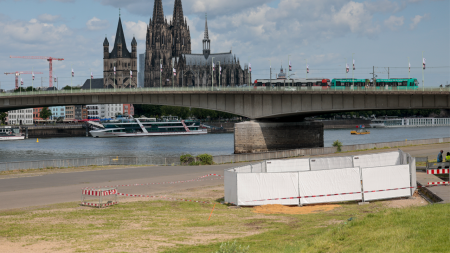The unexpected release of Travis Timmerman from a Syrian prison ignited a flicker of hope for Debra Tice, the mother of Austin Tice, an American journalist held captive in Syria since 2012. The initial misidentification of Timmerman as Austin Tice, fueled by circulating social media images, momentarily sparked joy within the Tice family, offering a fleeting glimpse of the reunion they desperately yearn for. Though bittersweet, the incident served as a poignant reminder of the emotional rollercoaster Debra Tice has endured for over a decade. Timmerman’s release, while unrelated to Austin’s case, underscores the volatile and often unpredictable nature of the Syrian conflict, a conflict that has entrapped countless individuals, both Syrian and foreign, in its complex web. It also highlights the enduring power of hope, even in the face of seemingly insurmountable odds. Debra Tice’s resilience and unwavering belief in her son’s eventual return remain a testament to a mother’s unwavering love and determination.
The overthrow of Syrian President Bashar al-Assad after 13 years of brutal civil war has dramatically reshaped the Syrian landscape, creating both opportunities and challenges in the search for Austin Tice. The release of thousands of prisoners from Damascus prisons by rebel forces, including the militant group Hayat Tahrir al-Sham, has sparked both hope and anxiety. While the освобождение of these prisoners represents a potential turning point, it also creates a complex and chaotic environment, making the search for Tice even more arduous. The uncertainty surrounding his whereabouts, coupled with the ongoing security risks in a post-Assad Syria, necessitates a delicate balance between cautious optimism and the grim reality of the situation. The fear of his potential demise during recent Israeli airstrikes or from the deliberate shutdown of prison utilities by Assad’s retreating forces casts a long shadow over the search efforts.
Debra Tice’s measured response to the question of U.S. government involvement in the search for her son reflects a pragmatic understanding of the complexities on the ground. Acknowledging the administration’s decision to refrain from direct intervention in Damascus, she expresses gratitude for the efforts of journalists, civilian organizations like Hostage Aid Worldwide, and other individuals working tirelessly within Syria. This grassroots approach, driven by individuals deeply committed to finding Tice, may prove more effective in navigating the intricate network of local actors and information channels crucial to locating him. Her trust in these on-the-ground efforts underscores the importance of local knowledge and networks in a volatile environment where official channels may be limited or ineffective.
Austin Tice’s journey to Syria as a freelance journalist for prominent news organizations, including the Washington Post and McClatchy, highlights the inherent risks faced by journalists covering conflict zones. His early entry into Syria at the outset of the civil war demonstrates his dedication to reporting from the front lines, seeking to bring firsthand accounts of the unfolding crisis to the world. His capture in Aleppo in August 2012 marked the beginning of a long and agonizing ordeal for his family, who have tirelessly advocated for his release. The subsequent video released weeks later, depicting Tice blindfolded and in captivity, served as a stark reminder of his vulnerable position and the dangers inherent in reporting from war-torn regions.
The complexities surrounding Tice’s capture are further compounded by the ambiguous nature of the video released shortly after his disappearance. The staging of the video, with armed men in what appeared to be Afghan garb chanting “God is great,” suggests a deliberate attempt to implicate Islamist rebels. However, the video’s emergence on a Facebook page linked to Assad supporters raises questions about its authenticity and the true identity of his captors. This ambiguity has further complicated efforts to secure his release, highlighting the challenges of navigating the murky world of misinformation and propaganda often prevalent in conflict zones.
The reported sighting of Tice in 2013, after reportedly escaping his confinement and moving between houses in Damascus’ upscale Mazzeh neighborhood, adds another layer of complexity to his case. This information, if verified, offers a glimmer of hope that he may have survived his initial captivity and remained within the city. However, it also raises further questions about the circumstances of his escape, his subsequent movements, and the reasons why he has not been able to contact his family or authorities. This sighting underscores the ongoing need for information and the importance of continued efforts to locate him, even years after his initial disappearance. The ongoing search for Austin Tice represents a complex and multifaceted challenge, requiring a combination of diplomatic efforts, on-the-ground investigations, and the unwavering hope that he will one day be reunited with his family.










